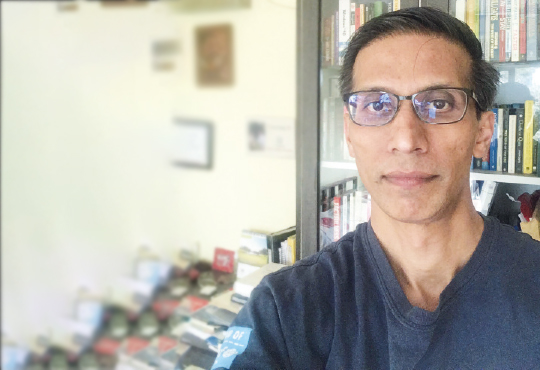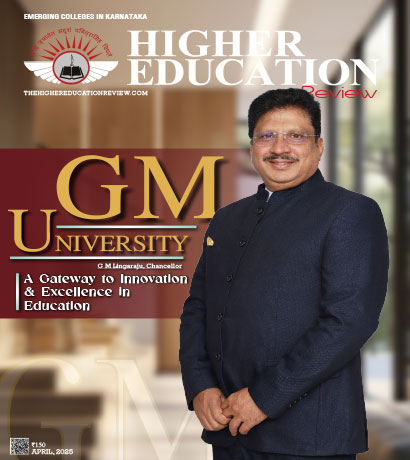IoT And Its Impact On Education

Professor Soumya Choudhury, Digital Business, IFIM B-School & Vijaybhoomi University
IoT stands for Internet of Things. That was all I used to know about the subject until I probed deeper. It was a term first used by Kevin Ashton of Proctor & Gamble in 1999 and it was quite fascinating, retrospectively, to note how ubiquitous and pervasive that term has become in our lives.
Did it exist earlier? Absolutely.
Is it a rehash of what we mean by edge devices or nodes? Not really.
The IoT value chain starts with components like sensors, cameras, embedded chips, antennas, routers, modules, modems and the like. It has multiple smart objects like temperature monitors, meters, smart bins and many more which drive the functionality of a set of components like CCTV camera systems for security. This comprises only 5-10 percent of the value chain while networking & bandwidth provision, platform enablement, system integration and application deployment constitute 15-20 percent each in the same value chain.
"We have all been exposed to various data related to the size of the IoT market, the number of IoT devices, and related in the public media"
What can we do with this data streams coming in through the IoT enabled application? well, plenty. To take an example of a parking lot sensor, the base data provided indicates whether a parking slot is empty or full. At the next level of information, one can analyze who typically is the user of the parking slot, what kind of vehicle, which slots are typically filled first and which remain empty, when is the peak period for the parking lot and similar. Leveraging these base tiers of data and information, the knowledge one gleans is how to implement a tiered-charging system (like Ola/Uber peak pricing) and how to locate an 'overstayed' vehicle. Further analysis of the knowledge will lead to a better understanding of why the parking lot is not fully occupied, for instance. Or it enables a platform to experiment on whether the occupancy changes with a different pricing structure by running the new data through the same analytical framework.
While the major use cases of IoT deployments is envisaged in Smart Cities (and Smart Buildings), Manufacturing (Industry 4.0/IIoT), Transport (including Autonomous Vehicles a.k.a. self-driving cars), Utilities (and Smart Solar), the same can be applied in education as well.
For Example:
* The Asset Management functionality can be used by educational institutes to keep track of key assets and resources,
* Command & Control/CCTV Security functionality can be used to design secure campus for safety of current students,
* Professors and staff belonging to the educational institute (especially after recent incidents that rocked the nation),
* Traffic and Parking Management system based on the efficient use of college premises and regulating speed of vehicles,
* Smart Waste Management (sensors in aggregator waste bins and garbage trucks to coordinate collection cycles based on need for emptying out these filled up waste bins), and so on.
Even the need for access to the campus could be changed using smart cards or biometrics where only authorized people are allowed to enter, and any breach triggers an alarm which triggers a rapid action security force to take action and defuse the alarm.
IoT biometrics driven devices can be a single-sign-on allowing access to education resources and which could be customized based on the type of student, learning path selected, and so on, thereby enabling smarter lesson plans through a better understanding of needs. Similar access can be accorded for selective or customized access based on the category of management and staff attached to the educational institution. This is quite different from the existing user/admin access accorded to basic users or super-users (admin staff) which is primarily the fingerprint of information available to each user profile and enabled through an IoT enabled authentication. These will be linked to active identity management vis-a-vis breaches through password sharing, fraud by imposters with fake ID cards and many more.
So finally we come to IoT education and why it is so important for the future. We have all been exposed to various data related to the size of the IoT market, the number of IoT devices, and related in the public media. IoT devices have overtaken the number of humans in the planet way back in 2017, and it is expected to touch 50 bn devices by 2025 and with market size of $4-7 Tn. India accounts for ~5 percent of this market and is expected to grow to 7-8 percent by 2025 from the current size of $15 bn in 2020. Whether it is related to working for application or platform solution providers, the industries like the transport and utilities hugely impacted by IoT or architecting additional features within one's own smart and connected home. The knowledge of such solutions will be a necessity for young adults and not just for the innovators/hobbyists experimenting with drones and robotics. At Vijaybhoomi University, we will teach an inclusive curriculum which teaches IoT and Industry 4.0 technologies in an easy to understand manner and the ability of taking multiple Level 0 electives across such critical technologies, math & science, humanities, performing arts, design, business and law through IDEAS (Innovation, Design, Entrepreneurial, Automation and Solution).
Professor Soumya Choudhury, Digital Business
Professor Soumya Choudhury is an Electrical & Electronics engineer from IIT-B with an MBA in General Management (with a specialization in finance) from IIM-A. Apart from being an Adjunct Professor at IFIM Business School in Supply Chain, Analytics & Operations Management, Soumya currently runs a startup Visilogix which is into Supply Chain Planning & Optimization tools & services.
Did it exist earlier? Absolutely.
Is it a rehash of what we mean by edge devices or nodes? Not really.
The IoT value chain starts with components like sensors, cameras, embedded chips, antennas, routers, modules, modems and the like. It has multiple smart objects like temperature monitors, meters, smart bins and many more which drive the functionality of a set of components like CCTV camera systems for security. This comprises only 5-10 percent of the value chain while networking & bandwidth provision, platform enablement, system integration and application deployment constitute 15-20 percent each in the same value chain.
"We have all been exposed to various data related to the size of the IoT market, the number of IoT devices, and related in the public media"
What can we do with this data streams coming in through the IoT enabled application? well, plenty. To take an example of a parking lot sensor, the base data provided indicates whether a parking slot is empty or full. At the next level of information, one can analyze who typically is the user of the parking slot, what kind of vehicle, which slots are typically filled first and which remain empty, when is the peak period for the parking lot and similar. Leveraging these base tiers of data and information, the knowledge one gleans is how to implement a tiered-charging system (like Ola/Uber peak pricing) and how to locate an 'overstayed' vehicle. Further analysis of the knowledge will lead to a better understanding of why the parking lot is not fully occupied, for instance. Or it enables a platform to experiment on whether the occupancy changes with a different pricing structure by running the new data through the same analytical framework.
While the major use cases of IoT deployments is envisaged in Smart Cities (and Smart Buildings), Manufacturing (Industry 4.0/IIoT), Transport (including Autonomous Vehicles a.k.a. self-driving cars), Utilities (and Smart Solar), the same can be applied in education as well.
For Example:
* The Asset Management functionality can be used by educational institutes to keep track of key assets and resources,
* Command & Control/CCTV Security functionality can be used to design secure campus for safety of current students,
* Professors and staff belonging to the educational institute (especially after recent incidents that rocked the nation),
* Traffic and Parking Management system based on the efficient use of college premises and regulating speed of vehicles,
* Smart Waste Management (sensors in aggregator waste bins and garbage trucks to coordinate collection cycles based on need for emptying out these filled up waste bins), and so on.
Even the need for access to the campus could be changed using smart cards or biometrics where only authorized people are allowed to enter, and any breach triggers an alarm which triggers a rapid action security force to take action and defuse the alarm.
IoT biometrics driven devices can be a single-sign-on allowing access to education resources and which could be customized based on the type of student, learning path selected, and so on, thereby enabling smarter lesson plans through a better understanding of needs. Similar access can be accorded for selective or customized access based on the category of management and staff attached to the educational institution. This is quite different from the existing user/admin access accorded to basic users or super-users (admin staff) which is primarily the fingerprint of information available to each user profile and enabled through an IoT enabled authentication. These will be linked to active identity management vis-a-vis breaches through password sharing, fraud by imposters with fake ID cards and many more.
So finally we come to IoT education and why it is so important for the future. We have all been exposed to various data related to the size of the IoT market, the number of IoT devices, and related in the public media. IoT devices have overtaken the number of humans in the planet way back in 2017, and it is expected to touch 50 bn devices by 2025 and with market size of $4-7 Tn. India accounts for ~5 percent of this market and is expected to grow to 7-8 percent by 2025 from the current size of $15 bn in 2020. Whether it is related to working for application or platform solution providers, the industries like the transport and utilities hugely impacted by IoT or architecting additional features within one's own smart and connected home. The knowledge of such solutions will be a necessity for young adults and not just for the innovators/hobbyists experimenting with drones and robotics. At Vijaybhoomi University, we will teach an inclusive curriculum which teaches IoT and Industry 4.0 technologies in an easy to understand manner and the ability of taking multiple Level 0 electives across such critical technologies, math & science, humanities, performing arts, design, business and law through IDEAS (Innovation, Design, Entrepreneurial, Automation and Solution).
Professor Soumya Choudhury, Digital Business
Professor Soumya Choudhury is an Electrical & Electronics engineer from IIT-B with an MBA in General Management (with a specialization in finance) from IIM-A. Apart from being an Adjunct Professor at IFIM Business School in Supply Chain, Analytics & Operations Management, Soumya currently runs a startup Visilogix which is into Supply Chain Planning & Optimization tools & services.

